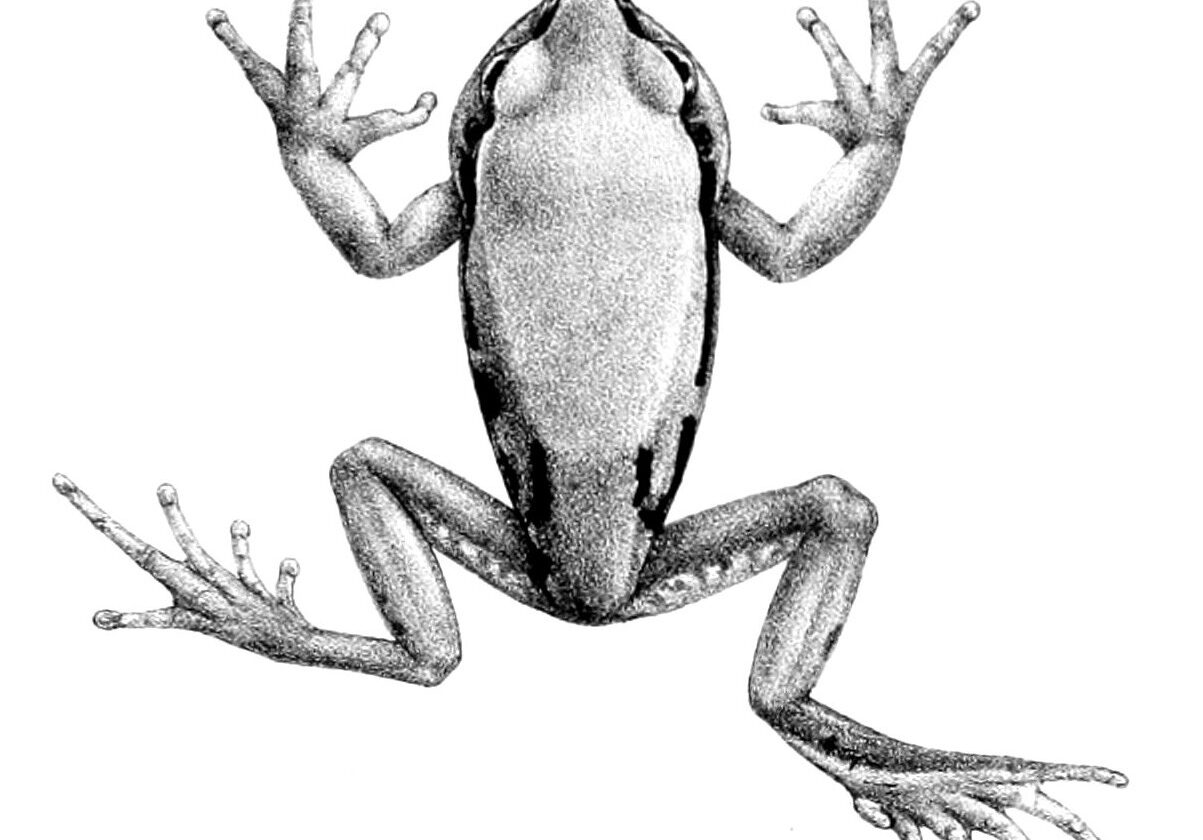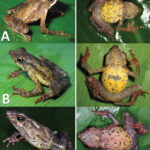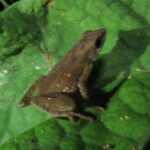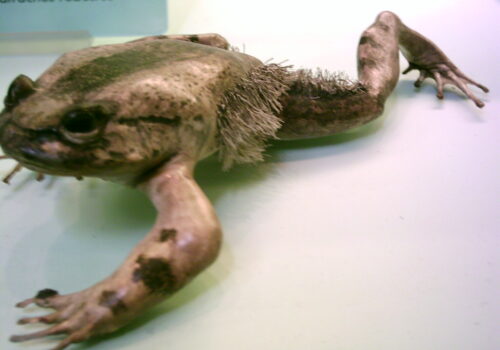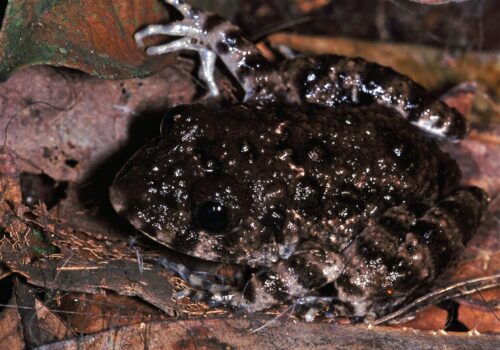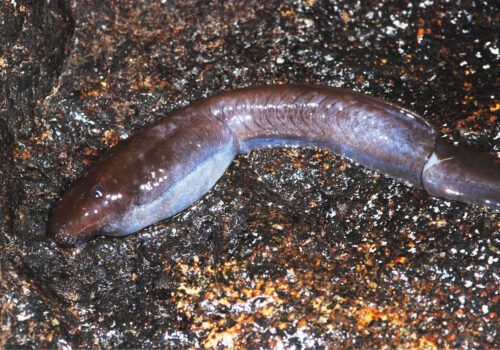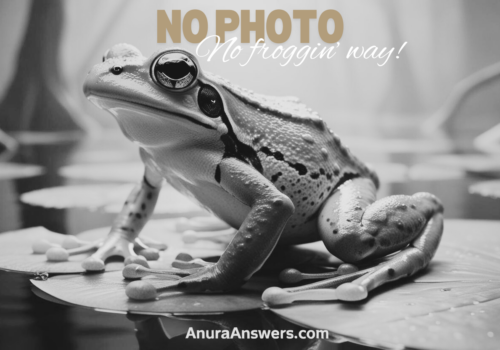- Meet Leptopelis gramineus: Ethiopia's Enchanting Emerald Tree Frog
- Taxonomy and Classification
- Natural Habitat: Ethiopia’s Highland Treasure
- Physical Characteristics: A Glimpse at Elegance
- Behavior and Life Cycle: A Symphony of Survival
- Ecological Role: Balancing Vibrant Ecosystems
- Threats and Conservation Status
- Cultural and Scientific Significance
- Conclusion: Championing the Emerald Amphibian of Ethiopia
Meet Leptopelis gramineus: Ethiopia’s Enchanting Emerald Tree Frog#
The cloud forest mists curl softly around moss-laden branches, veiling Ethiopia’s mountainous slopes in mystery. Beneath layers of verdant foliage, camouflaged against emerald leaves, a tiny arboreal creature makes its home. This is the Ethiopian Burrowing Tree Frog—known scientifically as Leptopelis gramineus. With mesmerizing eyes, vibrant green skin, and an enchanting song, this diminutive amphibian embodies the delicate balance of life in Ethiopia’s unique high-altitude ecosystems.
Although small and elusive, Leptopelis gramineus plays a significant role in the ecosystems it inhabits. Its existence speaks volumes about the health of its environment, making it both intriguingly beautiful and ecologically essential. Journey with us as we delve deeply into the vivid world of this fascinating frog species.
Taxonomy and Classification#
To truly understand any species, exploring its taxonomy reveals evolutionary secrets and family resemblances. Leptopelis gramineus belongs to the family Arthroleptidae—commonly termed “screeching frogs” due to many species’ distinctive calls. In particular, this frog is placed within the genus Leptopelis, known for its diversity of tree frogs scattered throughout sub-Saharan Africa.
A Closer Look at the Genus Leptopelis#
Leptopelis contains about 50 known species exhibiting varying habits and habitats. They typically display vibrant coloration important for camouflage within their specific ecosystems. Closely related species, such as Leptopelis vermiculatus, demonstrate how subtle environmental differences have shaped different adaptations, behaviors, and appearances within a shared evolutionary lineage.
Natural Habitat: Ethiopia’s Highland Treasure#
Nestled exclusively within Ethiopia’s high-altitude forests and mountain grasslands, Leptopelis gramineus thrives between elevations of 1,900 and 3,900 meters above sea level. These unique frogs flourish within moist montane forests, afromontane grasslands, and heathland habitats blanketed in a consistent, swirling mist that provides needed humidity. Ethiopia’s stunning Bale Mountains and Simien Mountains National Parks are among their crucial strongholds. Here, in these richly biodiverse zones, ancient trees draped in lichens interplay with hidden streams and pools, creating a lush microcosm ideal for amphibian life.
Habitat Preferences and Microhabitats#
The Ethiopian Burrowing Tree Frog predominantly occupies lush forests characterized by dense vegetation, abundant moisture, shading canopies, and extensive ground cover. Unlike many tree frogs, this fascinating species is often found closer to the ground, tucked within leaf litter, grass blades, moist soil, and occasionally inside low shrubs. Their niche preference reveals an emphasis on both arboreal and terrestrial elements—making them uniquely versatile yet sensitive to habitat disturbances.
By selecting microhabitats characterized by high humidity, mild temperatures, and ample cover, Leptopelis gramineus can efficiently evade predators, minimize water loss, and find abundant prey—rich insect life teeming within damp leaf debris.
Physical Characteristics: A Glimpse at Elegance#
One cannot speak of this frog without celebrating its distinctive aesthetic appeal. Adult Leptopelis gramineus typically measures between 20 to 40 millimeters, clearly placing them among smaller-sized tree frogs. Even at their diminutive size, they display exquisite beauty. Their bodies reflect an elegant emerald green coloration, harmonizing flawlessly with their rainforest canopy home. Tints and variations—ranging from pale green to dark green, sometimes showing subtle brownish markings—allow for effective camouflage amidst leaves, stems, and moss.
Their large, expressive golden-brown eyes are perhaps their most arresting feature, perfectly evolved for navigating dusk and night hunting. Horizontal pupils assist them in processing subtle nocturnal changes, vital for detecting prey and avoiding threats. Adapted for arboreal lifestyles, each limb ends in specialized, adhesive toe pads, facilitating impressive climbing and leaping abilities around the forest’s delicate network of foliage.
Adaptations That Shine#
The gorgeously vivid green coloration serves as essential camouflage. Frogs susceptible to predation rely on seamless concealment, granting them protection within the thick vegetation. Furthermore, this species exhibits permeable skin adapted to absorb moisture directly from their environment—a particularly beneficial trait within Ethiopia’s cool, misty montane forests.
Behavior and Life Cycle: A Symphony of Survival#
As captivating as appearance is, behavior offers deeper insight into their remarkable journey from tadpole to adult. Primarily nocturnal, Leptopelis gramineus frogs spend daylight safely concealed, emerging at night to feed, explore, and breed.
A Diet Rich in Small Invertebrates#
As voracious insectivores, they help control insect populations in their natural habitats. Using precision hunting tactics, aided by excellent vision and stealthy movements, they target beetles, crickets, moths, flies, small spiders, and other arthropods. Their keen senses ensure successful feeding ventures required to sustain their high-energy lifestyle.
Mating Rituals and Breeding Behavior#
Just after sunset in Ethiopia’s moist evenings, males ascend suitable perches and begin serenading potential mates with rhythmic, melodious calls resonating throughout forests—a melodious soundscape integral to forest ambiance. Females gravitate to prime males, guided by these calling competitions, ensuring robust offspring from successful courtships.
Unlike many of their tree frog relatives that directly deposit eggs atop vegetation near water, Ethiopian Burrowing Tree Frogs often breed within moist soil or burrows near temporary ponds. Females lay gelatinous clusters of eggs, meticulously selecting safe, moist cavities beneath leaf litter, logs, or stones. After hatching, the developing tadpoles quickly wriggle toward standing water. Here, tadpoles begin vigilant growth, relying initially upon aquatic algae before becoming fully carnivorous. The transition from aquatic tadpole to terrestrial froglet marks a profound metamorphosis that illustrates the resilience and adaptability of this fascinating species.
Ecological Role: Balancing Vibrant Ecosystems#
Frogs often serve as valuable biological indicators. Due to their permeable skin, sensitivity to pollutants, and dependency upon multiple habitat niches, their health illustrates ecosystem integrity. By consuming substantial insect populations, Leptopelis gramineus contributes directly to pest regulation, limiting ecosystem imbalance. Conversely, they also provide essential prey resources, nourishing birds, mammals, and reptiles, thus fulfilling a balanced ecological role.
Threats and Conservation Status#
Today, this charming frog faces increased vulnerabilities. Although currently classified by the IUCN Red List as “Least Concern,” continuous threats persist relentlessly. Habitat fragmentation, deforestation for agriculture and charcoal production, increased human settlements near montane forests, climate-change-related ecosystem shifts, and emerging amphibian diseases such as chytrid fungus could potentially threaten future populations. Protecting Ethiopia’s vital montane habitats is essential not only for this frog but for countless other unique species.
Current Conservation Efforts#
Ecologists and conservationists emphasize safeguarding intact habitats through the establishment and expansion of protected regions like national parks and reserves. Ecotourism and environmental education efforts also play crucial roles—emphasizing the intrinsic value of amphibians like Leptopelis gramineus within local communities and broader public understanding.
Cultural and Scientific Significance#
Beyond ecological balance, amphibians have long held positions within cultural imagination, quietly symbolizing transformation, adaptability, and environmental health. While specific cultural notes on Leptopelis gramineus are limited, amphibians universally inspire awe, cautionary tales, and respect.
Contributions to Scientific Understanding#
Research involving Leptopelis species provides crucial insights into climate change impacts, habitat fragmentation effects, amphibian immunity, and skin microbiome studies. Their sensitivity helps track environmental shifts, enhancing conservation science profoundly.
Conclusion: Championing the Emerald Amphibian of Ethiopia#
The fascinating world of Leptopelis gramineus reveals an interconnectedness essential in maintaining healthy ecosystems. By appreciating and understanding this beautiful emerald-green arboreal amphibian, we take vital steps toward environmental stewardship.
Each of us holds the power to advocate conservation efforts, support habitat preservation in Ethiopia, and become voices for frogs, who tell us so much with their presence—or troubling absence—from ecosystems. Today, let’s ensure these delicate voices ring clearly across mountain forests, preserving Ethiopia’s natural heritage for generations to come.








